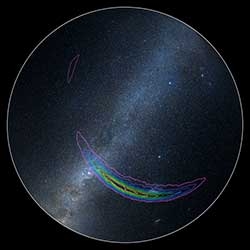Advancing Beyond Advanced LIGO

By Gabriel Popkin
APS April Meeting 2016 — Members of the Laser Interferometer Gravitational-Wave Observatory (LIGO) Scientific Collaboration took a victory lap of sorts at the APS April Meeting 2016 in Salt Lake City, Utah. Talk after talk began with slides showing the now-famous signal from GW150914, the formal name for the September 14, 2015 detection of gravitational waves from two black holes that merged 1.3 billion years ago.
“For the first time when I present this talk, I can start with a discovery, not just upper limits,” said Alessandra Corsi, an astrophysicist at Texas Tech University.
But speakers quickly pivoted to new astrophysics emerging from GW150914 and LVT151012, a second candidate event that appeared in LIGO data but did not reach the critical “5-sigma” statistical threshold needed to claim a true detection. Researchers also shared new ideas for peering deeper into the universe and increasing the frequency spectrum that gravitational-wave detectors can probe.
For astrophysics, GW150914 heralded a series of firsts — not just the first detection of a gravitational wave, but also the the first proof that black holes form merging pairs (only inspiraling neutron stars had been previously seen), and the first evidence of black holes more than 25 times the mass of the sun. The large sizes of the merging black holes also revealed that their source stars were low in heavy elements, and that their spins were substantially lower than the maximum possible value allowed under general relativity.
See full text